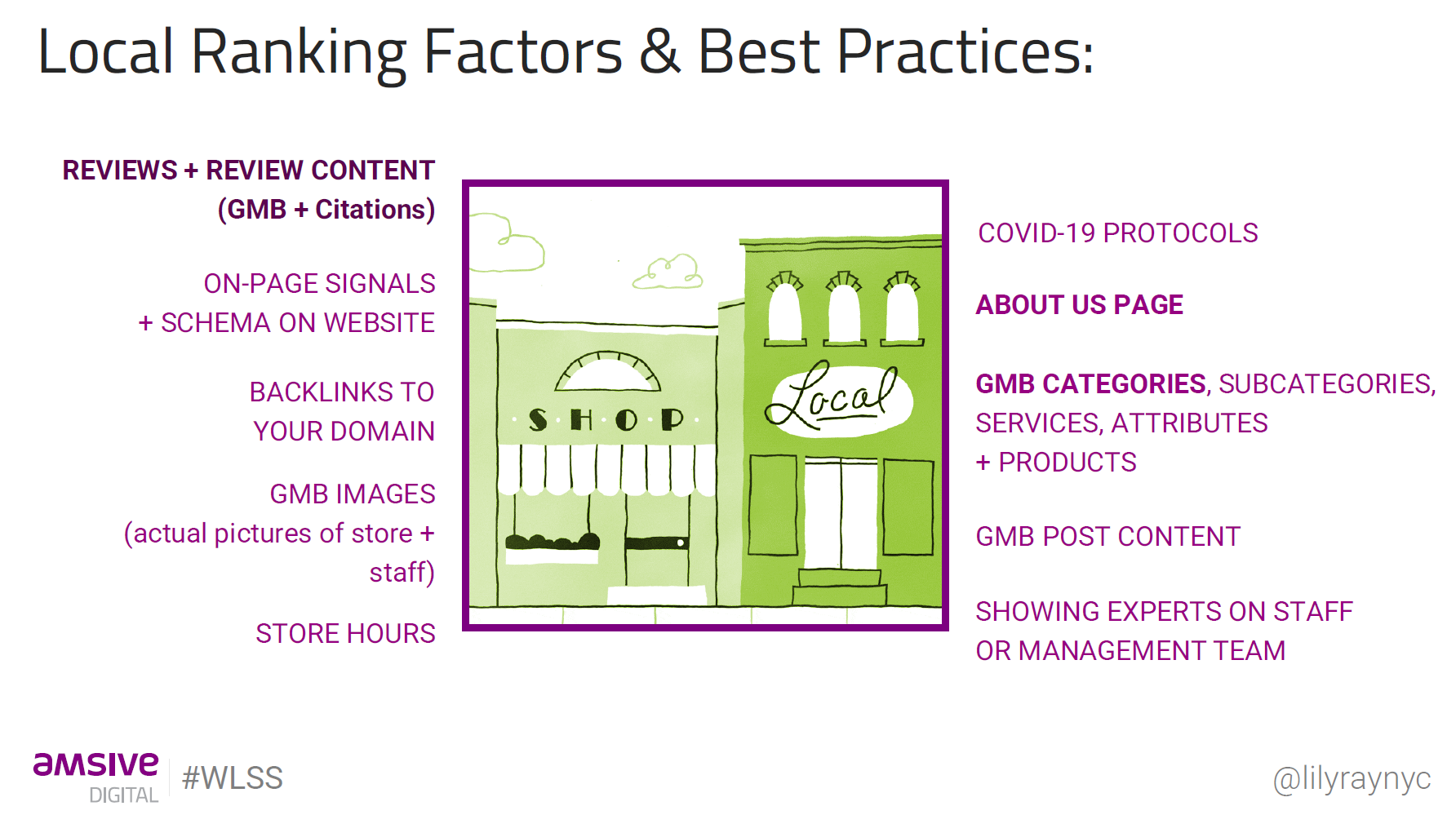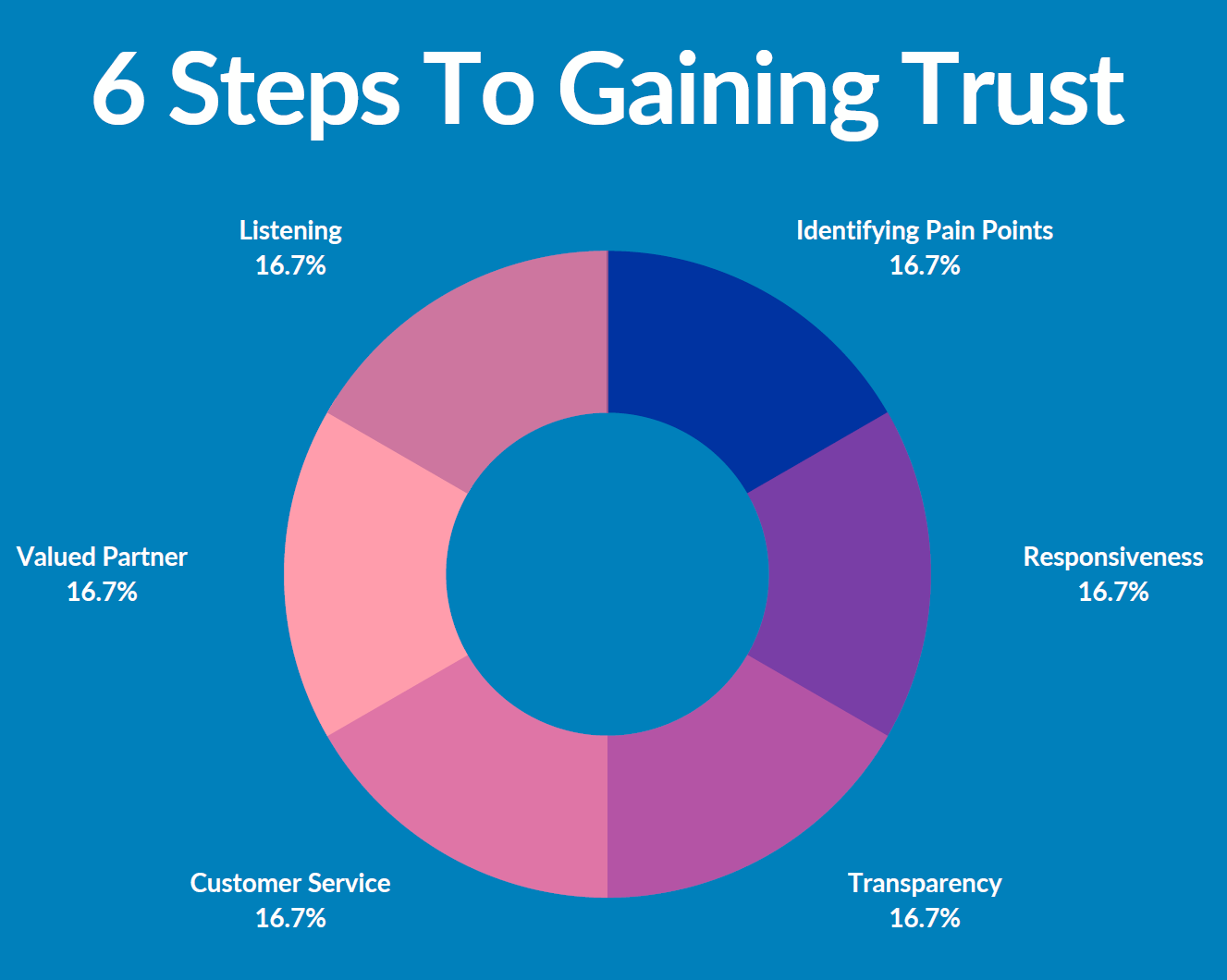🔥 Whitespark's Local Ranking Grids are coming soon! Get notified when we launch
🔥 Whitespark's Local Ranking Grids are coming soon! Get notified when we launch

The #WLSS is officially complete and our final event day covered E-A-T, Google Justifications, reports, effective copywriting and more. We opened the day discussing Diversity and Inclusion in Digital Marketing – this is a very important topic. We implore to download the guide below to learn more.
If you missed out on the event but would like to get access to all of the recordings, simply click the button below and sign up for our Video Bundle. You can also catch up on the content through our Day 1 & Day 2 recap posts. Jump right into content from your favourite Day 3 speakers:
1. Areej AbuAli, Rejoice Ojiaku & Shani Gwin
2. Kevin Kapezi
3. Lily Ray
4. Claire Carlile
5. Joel Klettke
6. Susan Staupe
7. Joy Hawkins
8. Rachel Anderson
9. Noah Learner
10. Dani Owens
11. Jason Brown & Ben Fisher
12. Greg Gifford



Rejoice: “Representation to me is normality. Where I go to work, what I do should be reflective of my actual day view, I want an actual life view. If we’re working in a media or advertising company, the content we put out should be reflective of people’s realities and not just the realities of white people. It should represent the worldview of everybody. It’s not just seeing the one black person at work, it’s also seeing multiple black people, multiple Asian people, and multiple people of different nationalities/races. I should be able to see that wherever I go, including work. That’s what representation is for a lot of people.”
Shani: “When I talk to a lot of our staff or our team, they always say, I didn’t know I was supposed to be looking for me until I started working here. That speaks out. I don’t even have words for that. Yes, you are supposed to look for you, because we are part of the society too. We can do things just as great if not better. My hope is that people start looking at ways to decolonize how they hire people, and look beyond AI/screening that they have. There’s some really, really incredible people waiting to be hired and contributing to the team.”
Areej: “A lot of it comes down to diversity of thinking. If your leadership team all looks the same – digital marketing is such a creative industry – how are you going to have that creativity and diversity when it comes to making decisions? When it comes to producing those campaigns? For me representation is just being able to look up to people who are in roles that I would love to be in one day, and be inspired and motivated that I could be there because there are people who look like me who’ve made it there.”Download the Diversity and Inclusion Guide that accompanies this talk. The guide incorporates the ideas shared by Areej, Rejoice, and Shani to help you create an inclusive workplace, plus suggested resources to help you take action to Listen, Watch, Learn, and Commit to Change.What can companies do to become more diverse and to support a more diverse workforce?

In the past 18 months you’ve likely been dealing with pivoting your business to digital-first.
There are 3 conditions for a pivot:
 If you’re thinking of pivoting to e-commerce, ask if there is an opportunity to solve a problem and if your business can be the solution.
If you’re thinking of pivoting to e-commerce, ask if there is an opportunity to solve a problem and if your business can be the solution.
Start by Learning to Spot Rising Trends
When you utilize rising trends
 Leverage Your Business’s Existing Capabilities with Strategic Intent
Leverage Your Business’s Existing Capabilities with Strategic Intent

How does E-A-T apply to local SEO?
“A GMB profile can serve as an entry point to getting your business entity listed in Google’s Knowledge Graph”
What features does Google offer local businesses to improve or convey E-A-T? Well, it’s a lot of the same local ranking factors and best practices.  How You Can Improve Your Businesses E-A-T
How You Can Improve Your Businesses E-A-T
=Filter pages by UTMs in GMB to identify search queries used to potentially generate Justifications in GMB – add these to your descriptions, services, etc. These are often high converting keywords driving people to your store and they are often different than what you would expect or currently presenting on your GMB profile.

What are Justifications On Google Search
“Search justifications help searchers better connect results with their query” Joel Headley
A Justification is content highlighted in search. Justifications are when you have a search term and Google highlights the words, for example in a meta description, that match the search terms. In search results, these display a “justification” to explain to the searcher why a particular result is chosen, highlighting the user’s search query.GMB Justifications that Queries Can Trigger
Here’s a few examples of what justifications look like:
 Why Do Justifications Matter?
Why Do Justifications Matter?
A study conducted by Dr. Pete at Moz found that over 57% of the Local Packs featured justifications (1,175 of 2,063 local packs)!
“We’re aiming to be the business that stands out in a dense field of options. If any aspect of our listing signals to a customer that our business is the one that can best fulfill their intent, it’s such a win. ” Miriam Ellis, Moz
How Can I Get Justifications?
Claire shared 6 ways you can work towards getting justification. We’re sharing 4 of her tips below!
#1 Monitor SERPS for your important keywords (across devices).
You can use Mobile Moxie to automate this process.
#2 Use Google Search Console to see queries that your GMB listing is appearing in.
 If you have a brand name that is commonly misspelled you can use Regex within GSC to add filters.
If you have a brand name that is commonly misspelled you can use Regex within GSC to add filters.
#3 Use GMB Insights
GMB Insights is often overlooked as it is difficult to pull the data into any third-party tools, but it is quite possible that when you filter out your brand, it is going to give you insight into what people are searching for when it comes to the products and services your organization offers.
#4. Go Beyond Your Core Search Terms
You need to know your long tail keywords, potential opportunities you aren’t taking advantage of. Expand your keyword queries to include modifiers for:
Pro Tip – Check out the Know this Place Questions that Google is asking. This will give you an idea of what Google is interested in for the attributes with your business because that’s what people are interested in knowing.

Joel shared a ton of great tips and tactics that you can use to whip your content into shape in 5 days.
We’re sharing his suggestions for how you can gather intel through internal interviews with your team, yourself, and then the utilizing analytics or ad data.
Answer key questions about your customers
A lot of times you think about conversion in terms of fixing problems, but often it’s more about scaling your successes.
Context changes everything. Awareness level changes the way we communicate with people.  How do we know where our customers’ awareness level is?
How do we know where our customers’ awareness level is?

Client retention is one of the hardest parts of your job as account managers, digital marketers, and SEOs, because you constantly have competitors and other people reaching out to them trying to sell them their services.


When it comes to images, SEOs spend a lot of time and effort on the wrong strategies that don’t result in accomplishing their goals.
Your goal with images should be to:
Strategies to help make your images look good:
 How photos can help you rank better
How photos can help you rank better
How you can track the impact of your images


Rachel takes you through 3 different levels of Enterprise Local SEO that include Basics, Mastering, and To The Moon. Today, we’re sharing the basics with you, because if you don’t have these nailed down, you’ll never make it to the moon.
The Basics – AKA The Bare Minimum
Data Maintenance
Signs of Poor Data Maintenance
 Setting and Tracking KPIs
Setting and Tracking KPIs
Now Monitor Their Ongoing Performance
Check out Rachel’s presentation from last year where she shares technical audit tips you can apply to your location pages and how to adjust for population to determine which pages are performing and which aren’t.
Reputation Management

Google Search Console is a treasure trove of valuable data for search marketers, but did you know that you’re only seeing the tip of the iceberg when you use Google’s web interface for accessing Search Console data?
Noah explained how you have access to much more data through the Google Search Console API, and how you can mine that data for insights that drive real business results.
Some of the limitations of the basic Search Console are:
 The Search Console API allows you to break free from those constraints. Start pulling in your Search Console data through the API and you get:
The Search Console API allows you to break free from those constraints. Start pulling in your Search Console data through the API and you get:
To get started, you need to pull your search console data into BigQuery, and then connect BigQuery to Google Data Studio. I know what you’re thinking: “That sounds great, but I’m not a programmer”.
I know what you’re thinking: “That sounds great, but I’m not a programmer”.
Noah explained that you don’t have to be. A system like Jepto can connect all of these for you for only $10 per month. Noah also showed us the incredible user interface that he and his team at Two Octobers have built that will allow you to analyze your data as well as they do. Click here to check it out and sign up to get notified when they go live with it!
Click here to check it out and sign up to get notified when they go live with it!

The Impact of GMB Reviews
Review Advice and Tips to Help Your Business


How to Identify Fake Listings
How Do You Get Rid of Spam Listings?
1. Document everything in a spreadsheet; name, address, phone number, etc. Tom Waddington has this great tool to access the company information on Google. It’ll harvest the information from a GMB profile into a CSV, then you can just copy the CSV in five seconds or more.
2. You need to have two real strikes in order to be able to report a fake listing – it can’t be based on hunches.
For Example: You can’t use “business.site URL” as a reason. You can’t use the phone number as a reason, unless you call that phone number and they answer “garage door” or something where they didn’t answer as the name of the GMB profile, that would be one strike. That is an actual piece of evidence you would include in your report.
3. Some businesses by law are required to have a business license. Look at the company and what they sell. For example, if a garage door supplier requires a business license in that state/province, then you can cite that law and have a link. There are licensing authorities for locksmiths and garage door companies so you would have to go by the state or the city.
4. The next step is going to be Secretary of State (US businesses only).
These are all questions that you need to ask yourself and find out. However, there are a lot of inconsistencies from state to state and industry to industry, so it’s not 100% reliable.
5. From there you will submit it all your evidence with the GMB listings’ CID links and fill out the redressal form. If you have more than 10 listings, you will have to submit a spreadsheet. In that spreadsheet, give all your reasons, summarize it, and cluster your listings together by spam type and then you can use one redressal. Write out your description, hit submit and done. Hopefully you will get some traction within the first few weeks after submission.

A lot of agencies try to just coast along giving customers generic or really crappy reports.
If your reports sucks, you’re going to blend into the background noise of all of the other things going on with your client. Which means you become kind of invisible to your clients, you don’t really have any value to them, and they don’t really know what’s going on with what you’re doing.
Have no fear! Because Greg is going to help you make your reports awesome. With his help, your reports will tell a better story.
How to Make Your Reports Super Green
Your report shows your value to clients – prove you’re worth it. They are paying you so that you can help them understand what’s going on, what opportunities are available, and how they are doing better from your help.
Monitoring stuff isn’t reporting. Just because we care about something as SEOs and marketers, doesn’t mean the client cares or that it’s important to them. Bad past experiences results in client mistrust (direct or indirect).
Below is an example of a report Greg uses:
We hope that you enjoyed a look into the 2021 Local Search Summit. We only shared a small amount of all the local search learning that was provided by every speaker. If you want to get the most out of all the content and were not able to attend the live event for free, you can still unlock full access by purchasing our Video Bundle.We would love to hear about your experience at the summit or the top tip you learned from the event in the comments below. ⬇️